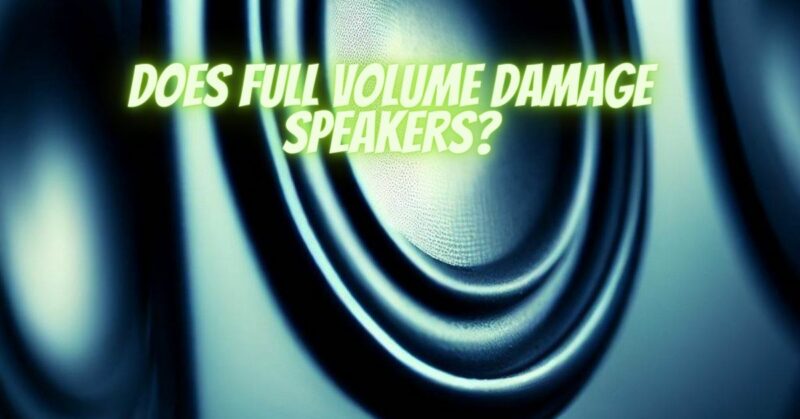One of the most common myths in the world of audio is the idea that listening at full volume will damage speakers. This misconception has caused many to avoid turning up the volume to its maximum, fearing potential harm to their precious audio equipment. In this article, we will debunk this myth and delve into the factors that truly affect speaker performance, sound quality, and longevity.
- Understanding Speaker Components
To understand the impact of volume on speakers, let’s first look at how they work. Speakers consist of several components, including a cone or diaphragm, a voice coil, a magnet, and a frame. When an electrical signal passes through the voice coil, it creates a magnetic field that interacts with the permanent magnet, causing the diaphragm to move back and forth. This movement produces sound waves that we hear as music or audio.
- Speaker Durability and Power Handling
Modern speakers, especially those of reputable brands and high-quality construction, are designed to handle a range of power inputs, including high-volume levels. Speaker manufacturers specify a power handling rating, usually expressed in watts, to indicate the maximum power the speaker can handle without damage. As long as you stay within the speaker’s power handling capacity, there is no risk of damaging the speaker, even if you listen at full volume.
- Distortion and Signal Clipping
While playing music at full volume within the speaker’s power handling range is not inherently harmful, it can lead to distortion and signal clipping. Distortion occurs when the speaker’s diaphragm cannot accurately reproduce the audio waveform due to excessive movement or excursion. Similarly, signal clipping occurs when the amplifier cannot provide enough voltage to reproduce the full audio signal, resulting in the flattening of the waveform’s peaks and distortion. Both distortion and clipping can negatively impact sound quality, making the audio less enjoyable to listen to.
- Speaker Break-In Period
New speakers, particularly those with stiff components, may require a break-in period during which the sound quality can improve. During this period, the speaker’s suspension system becomes more flexible, leading to smoother sound reproduction. Playing music at moderate volumes during the break-in period can be beneficial, as it helps loosen up the components without subjecting them to excessive stress.
- Protecting Your Ears
While full volume might not harm your speakers, it is essential to consider the potential impact on your hearing. Listening to audio at excessively loud volumes can lead to hearing damage over time. The World Health Organization (WHO) recommends limiting personal audio devices to 85 decibels (dB) to protect your hearing health.
- Responsible Listening Habits
To ensure the best audio experience and protect both your speakers and hearing, follow these responsible listening habits:
- Avoid cranking the volume to the maximum if it results in noticeable distortion or clipping.
- Familiarize yourself with your speaker’s power handling capacity and stay within that range.
- Take breaks from listening to allow your ears and speakers to rest.
- If you notice any unusual sounds or distortion, lower the volume and investigate the cause.
Listening at full volume within the power handling capacity of your speakers is generally safe and will not damage them. High-quality speakers are designed to handle a wide range of power inputs, allowing you to enjoy your favorite music at various volume levels without concern. However, be mindful of distortion and clipping, which can impact sound quality, and take measures to protect your hearing by adopting responsible listening habits. By understanding the capabilities of your speakers and using them responsibly, you can enjoy an immersive and safe audio experience.


